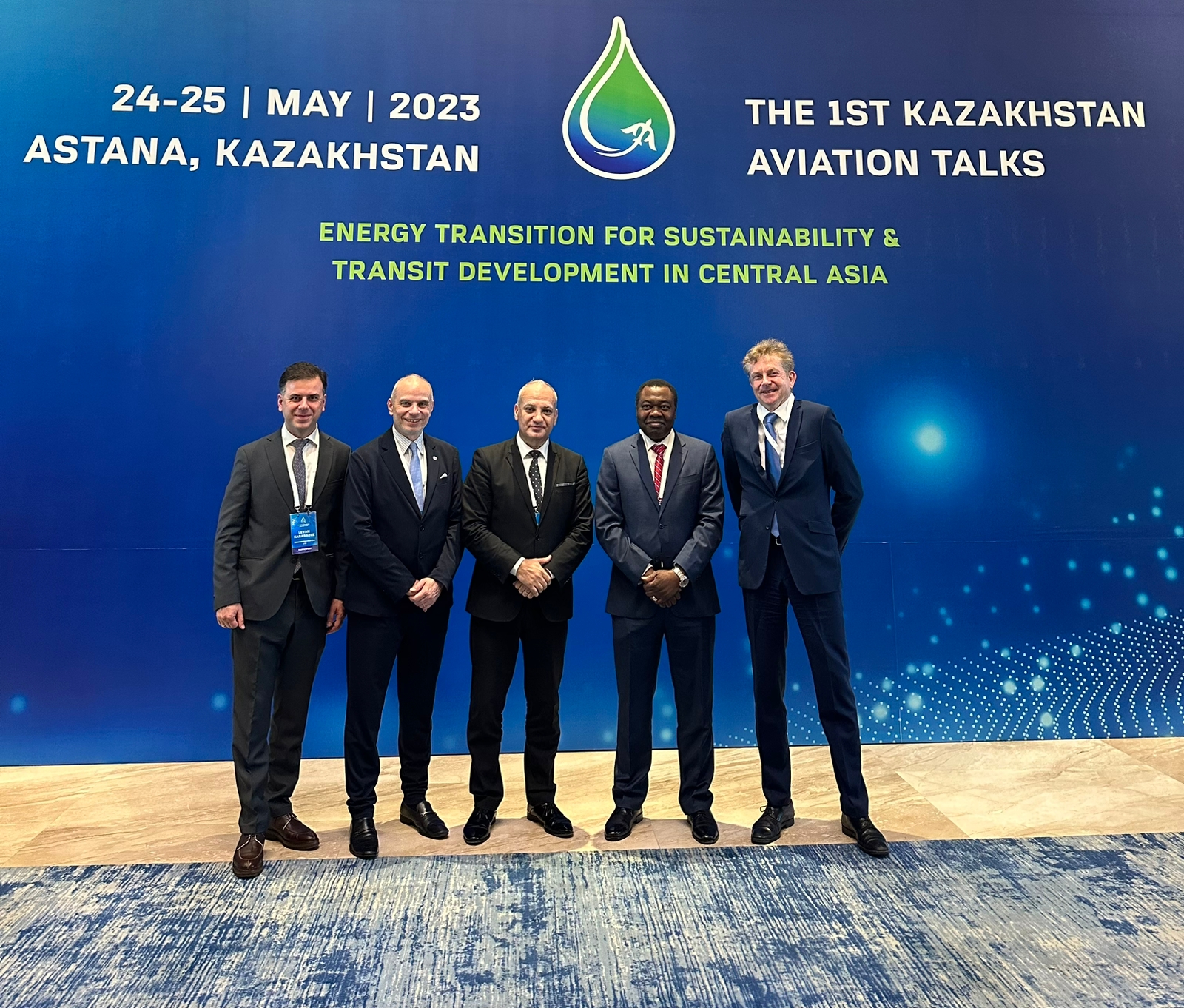ASTANA – Astana hosted the first Kazakhstan Aviation Talks on energy transition for sustainability and transit development in Central Asia, exploring challenges facing the aviation fuel industry in the region, reported the press service of the Aviation Administration.

(L-R): Levan Karanadze, Counsellor to Vice Prime Minister/Minister of Economy and Sustainable Development; Chairman of Supervisory Council of Sakaeronavigatsia (Georgian Air Navigation Service Provider), Dr. Kostas Iatrou, CEO of Air Transport News and Secretary General of HERMES Air Transport Organization, Catalin Radu, Director General of Aviation Administration of Kazakhstan, Olumuyiwa Benard Aliu, Lifetime Ambassador of ICAO, President of iPADIS and Johannes Baur, Head of Cooperation, EU Delegation Kazakhstan. Photo credit: Aviation Committee.
The talks, first of its kind, are a foundation for cooperation between the countries, said Director General of Kazakhstan’s Aviation Administration (AAK) Catalin Radu at a May 24 press conference.
According to Radu, the aviation administration works with the country’s Energy Ministry and the Ecology and Natural Resources Ministry to update legislation and regulatory compliance to develop new programs focusing on the importance of work in civil aviation on the right mechanisms.
“Safety and security of passengers is our priority. We do our best to make flights safe and affordable and strive to provide the right connections,” Radu noted.
He added that the aviation administration collaborates with profile agencies in Central Asia and the Caucasus to foster regional cooperation on improving efficiency and security.
Timur Tlegenov, deputy chair of the civil aviation committee, spoke about the current situation in the country’s aviation industry. He noted that air passenger traffic has recovered after the pandemic and shows stable growth, surpassing forecasts.
Last year, the country’s airlines carried 11 million passengers, 17% more than in 2021. Over the four months of this year, the number of passengers grew to 3.6 million, a 38% increase from the same period in 2022.
Air transit through Kazakhstan also grows rapidly, resulting in a 90% rise in the number of flights served in 2022.
“Subsidizing air routes is one of the measures for flight availability in the country. It has been in force since 2002, aiming to connect the center with regional airlines. In Kazakhstan, 23 air routes are subsidized,” Tlegenov said.
To increase the country’s transit potential, 13 airports introduced the open skies aviation regime with the fifth freedom of the air, an airline’s right to operate flights to carry passengers between two foreign countries.
With the eight routes resumed to four countries, another eight international routes to Israel, Malaysia, Oman, and Pakistan are expected to be opened by the end of this year.
Large foreign low-cost airlines, including India’s IndiGo, Malaysia’s AirAsia, and Oman’s Salam Air, will enter the Kazakh air transportation market.
Tlegenov named jet fuel shortage and its high cost one of the main constraints for developing the country’s civil aviation.
The Ministry of Industry and Infrastructure Development has drawn up measures to attract independent jet fuel suppliers and expand aviation fuel imports from border countries. A phased transition to the exchange trading of jet fuel and pilot transition of Astana and Almaty airports to the use of Jet A-1 fuel is also being considered.
The first day’s theme, Requirements for Energy Transition in Aviation, also covered aviation needs, the industry’s energy transition under the Net Zero 2050 initiative, its difficulties and solutions.
The second day’s session will review the global market outlook for sustainable aviation fuel and its impact on airlines.
The Kazakh and foreign aviation representatives will sign six memorandums of cooperation and a letter of intent during the event.
The forum, organized by KazMunayGas national company, brought together over 250 companies and key industry players in the worldwide aviation market, international specialists, development institutions and the scientific community.


